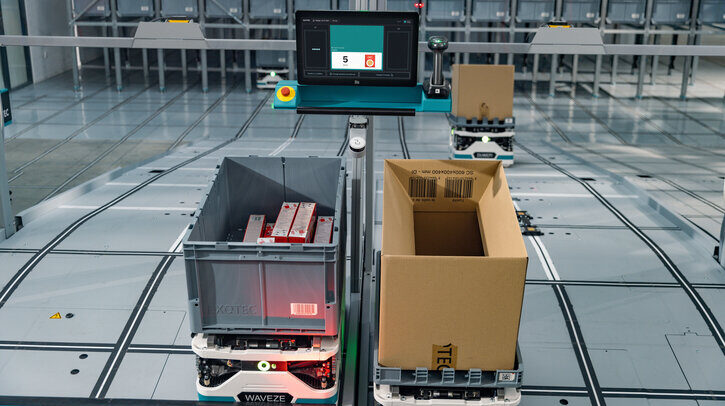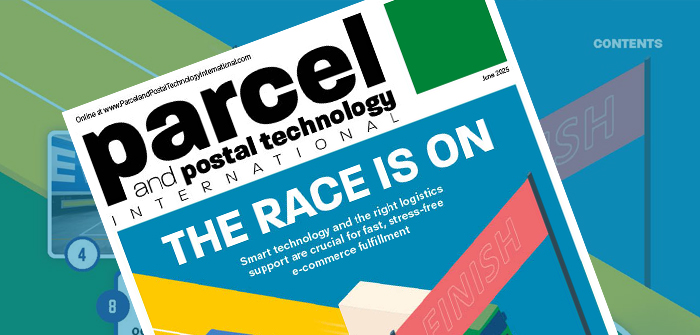Already under pressure from strict deadlines and rising volumes, the parcel and postal sector now finds sustainability a uniquely complex challenge to solve – and it’s a priority, too. If today’s growth continues without operational change, the World Economic Forum forecasts a 61% increase in city-based delivery vehicles by 2030, accounting for around 54% of transportation emissions while contributing to congestion and air quality issues. Mitigating these effects requires more than just fuel alternatives for traditional fleets.
Robotics could play an important role in this area, and research by the International Federation of Robotics (IFR) suggests the logistics sector is already an early adopter. According to the organization’s most recent report, sales of professional service robots (a term that excludes systems used in factories) increased by 30% (205,000 units) year-on-year in 2023. More than half of these (113,000 units) were deployed in transportation and logistics, with demand stimulated by labor shortages in that sector.
Improving warehouse processes
Dr Christopher Müller, of the IFR’s statistical department, believes businesses have benefitted from advances in sensors and hardware that have enabled robots to be less sensitive to interference and more capable of handling a mix of indoor and outdoor environments. With a larger breadth of payload capacities, intralogistics has become a popular application for the latest solutions within the transportation and logistics sector.
“Navigation is easier in indoor environments, as lighting is constant and sensor-friendly – unlike sunlight – and weather conditions are not an issue. It is easier to meet safety requirements in non-public areas such as warehouses, where the robot only meets safety-trained personnel,” he explains, noting that such robots build on more familiar forms of automation.
“Indoor transportation processes absorb substantial amounts of productive time if done by a human. Using robots instead of traditional automatic transportation, for example conveyor belts, is more flexible and thus suitable for use cases that require flexible routing or a multitude of routes,” he adds.
Exotec designs and builds robotic solutions for warehouse automation. The company’s co-founder and CEO, Romain Moulin, says efficiencies at the warehouse offer important benefits further downstream. “Robotics can indirectly contribute to more sustainable last-mile deliveries by improving precision upstream,” he explains. “Fewer picking errors means fewer returns, higher inventory accuracy avoids unnecessary shipments, and faster processing allows for better route optimization.”
There are wider benefits for users. For example, there are options for workers to upskill by switching from predominantly manual roles to operating and maintaining the robots. At the same time, the business case is improving: standardization and technology designed for mass production are driving down investment costs, and the latest software enables robots to work more autonomously.
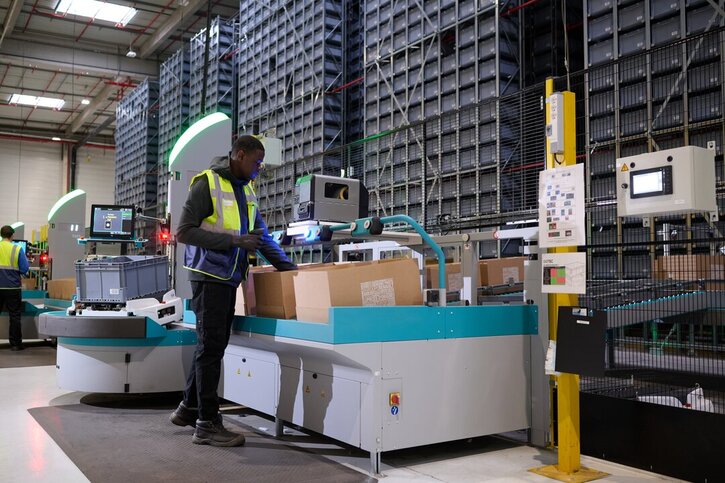
And there’s more to come. “Artificial intelligence will drive new applications in picking, as well as robots evolving in more unstructured environments,” Moulin comments. “This should improve the performance of warehouses.”
Last-mile operations
Outside the warehouse, advances in AI are enabling Ottonomy to broaden the operational design domain of its delivery robots. The company recently unveiled a new generation of its Contextual AI technology, which empowers the robots to better understand and interpret their surroundings and other road users, adapt in real time and issue more accurate arrival times to customers.
Within the parcel and e-commerce sector, Ottonomy’s founder and CEO, Ritukar Vijay, believes the robots’ ability to handle dynamic environments will drive trends in unattended and last-mile deliveries, locker integrations and indoor/outdoor logistics. “Robots are no longer just replacements for the ‘dull and dirty’ tasks,” he says. “They are partners, on-job companions and performance boosters.”
For last-mile deliveries, Ottonomy believes that switching to lighter, battery electric robots addresses environmental, operational and cost challenges. The company claims a 30-40% smaller CO2 footprint for short-distance deliveries, with a 60-70% reduction in costs, in addition to the ability to work around the clock.
According to Vijay, a forward-looking approach is important when it comes to choosing your robotic investment. “One of the key learnings while working with a few of our customers is they are not only finding solutions to the problems that they have but are keen to look at solutions that are scalable and modular enough to cater to their future requirements,” he explains. “For example, while working with a few of the key hospitals, robots that can navigate both indoors and outdoors are the focus, keeping expansion and scalability in mind.”
Ottonomy’s customers include DPD UK, which deployed its first multilocker robots in Milton Keynes in November 2024. The company has already switched its last-mile fleet to electric vans as part of a 2040 net zero CO2 target, and has delivery robots operating within a mile of their depots in four cities. The latter initiative is the first stage of a 30-depot rollout at towns and cities across the country.
Chris Meir, director of IT and innovation at DPD UK, believes the technology has evolved to a stage where robots are fast enough for last-mile operations and much simpler to deploy. After an initial supervised mapping session, they can operate without human intervention for up to 12 hours and 30 deliveries per day.
“The feedback from the public has been fantastic – we get people asking for their deliveries to be completed by robots,” reports Meir. “However, the original delivery robots were very much a stepping stone to the future. They are limited to two parcels per trip, but they have helped us understand how robot delivery may be completed in the future.”
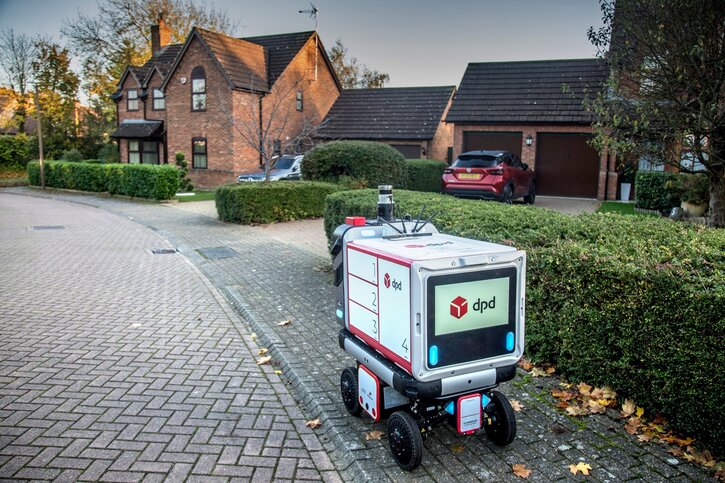
Locker robots build on that success. DPD’s Ottobot offers a 70kg payload with eight compartments – the largest of which has a 38-liter capacity – and features a swappable battery with a six-hour lifespan. Like their predecessors, they can use the Milton Keynes Redway pedestrianized pathway network to avoid traffic.
“Robot lockers are the future of sustainable mobile robotics,” continues Meir. “Deliveries are consolidated in a single location that consumers can collect from. The robot locker can drive to the location and can be used for collections, bringing parcels back to the depot for dispatch.”
Supporting net zero strategies
Evri is also deploying robots as part of its 2035 net zero CO2 strategy. The company reduced its per-parcel carbon footprint by 21% year-on-year in 2023/24, supported by hydrogen and electric vehicles and e-cargo bikes – the latter delivered 720,000 parcels in that same year.
Although innovation delivery manager Adrian Berry says it’s “early days” for the company’s robotics initiatives, he argues that several simultaneous advances have helped improve their operational suitability.
“Computer vision has improved significantly in the past few years, and some of these models can be run on the edge with relatively low compute power,” he reports. “This has enabled the evolution from automated guided vehicles [AGVs, which follow set paths or markets] to autonomous mobile robots [AMRs, which can calculate their own routes].
“We’re exploring use cases in our middle-mile operation, which we expect to deliver significant savings as well as help in smoothing out peak spikes. We hope to be running some tests in the very near future where AMRs will be working alongside colleagues, ultimately helping us maintain consistent service levels year-round. Improvements in battery technology have benefited the business case.”
However, Berry says that the biggest sustainability gains can be found in the last mile – where smaller, lighter and electric vehicles are helping to reduce both CO2 emissions and congestion. He believes that robots are an opportunity for further efficiencies, and reveals that Evri has two trials scheduled for this summer.
The company will use a wheeled robot from Delivers.AI to assess its suitability for night-time deliveries and how it could support customers who need longer to get to the door. It will also test how RIVR’s four-legged ‘robo-dog’ could assist couriers by taking parcels from the van to customers’ doors, leaving the human operator to focus on more complex tasks.
Importantly, with sustainability in mind, robots offer vital insight into the environmental impact of last-mile deliveries. Evri’s vehicles are usually owned by self-employed couriers, which limits the amount of data that can be recorded. By owning its own robots, the company can track their energy use and resulting emissions, alongside traditional metrics such as delivery success rates.
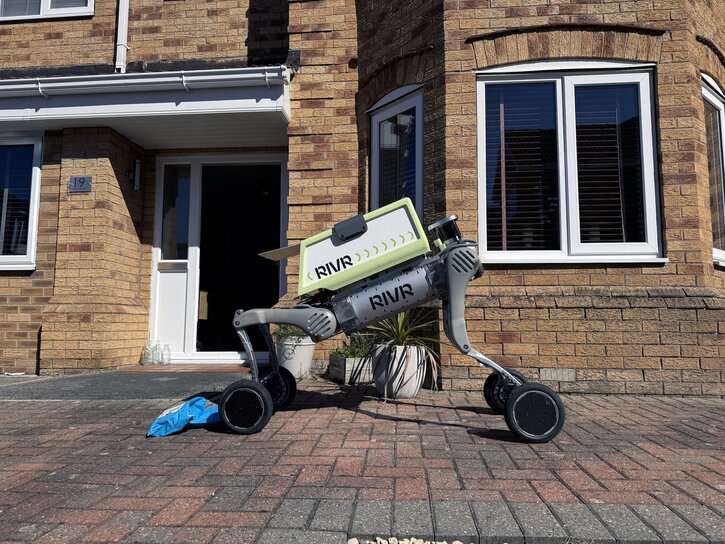
However, the company hopes to support – not replace – human couriers with robots. Berry sees opportunities to introduce a blended last-mile operation, where electric vans supply couriers who are on foot or in smaller electrically assisted vehicles (such as e-bikes), who in turn work with robots and autonomous mobile lockers. Customer feedback and operational feasibility is an important foundation for future scaling.
“I’ll be interested in customer adoption and reaction, and whether households in the trial continue to want to use the robots once the novelty has worn off,” Berry comments. “We’ll look to refine the customer offer as the trials progress, testing time-slot deliveries and evenings. I’m also keen to understand if and how the robots can support disabled customers or those with accessibility needs.
“Ultimately, I see robotics not just as efficiency tools but as essential enablers of a more sustainable logistics model that can deliver both environmental benefits and superior customer experiences.”
Foundations for growth
Although the potential for automated deliveries is growing, there are concerns that policymakers aren’t keeping pace with the latest developments.
In a recent report, the World Economics Forum stressed that further development is needed, which will rely on supportive regulations. The organization has called for “robust and harmonized” rules to enable OEMs and logistics players to adopt more sustainable electric and autonomous supply chain technologies.
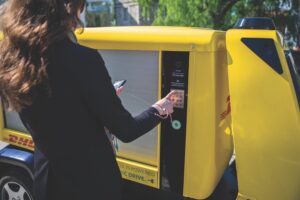
Case studies support this. Estonia has been allowing unmanned vehicle trials on public roads since 2017, provided there is a ‘driver’ present. This has enabled DHL Express to trial Clevon’s teleoperated delivery robot in Tallinn during 2023 – including in the Old Town, which is an access-restricted UNESCO World Heritage site.
The trial was extended from internal deliveries in its first phase, to 18 commercial customers, and eventually to consumers, switching to shorter routes replenished by a van to minimize the number of empty kilometers traveled by the robot. The data gathered was aimed at informing regulatory changes to support further projects.
DPD UK has recently moved to larger robots, and the company’s Chris Meir agrees that reforms are needed. “The main issue going forward is scalability,” he says. “The robots will get bigger but, until autonomous robots are allowed on the highway, which requires legislation, I don’t think we will see the full potential.”
Going dark
As controlled environments, warehouses are often ripe for automation – and robots offer the potential to go one step further, reducing energy consumption and CO2 emissions by removing humans and the associated need for lighting and temperature control.
Evri’s Adrian Berry sees numerous advantages – including space optimization, reduced error rates and consistent service – but notes high capital investment and a complicated sustainability equation once the carbon impact of manufacturing the robots is accounted for.
There are other risks, too. “Businesses like Evri will always look to mitigate risk by testing on a smaller scale, perhaps implementing ‘dark zones’ within existing facilities before committing to fully automated warehouses,” Berry comments.
“Increasingly, we’re seeing retailers under attack from cyber gangs, so building operations that can’t be run at all by humans introduces new vulnerabilities that could actually increase energy use during recovery from incidents, as well as the obvious consequences for service.”
Ottonomy’s Ritukar Vijay is similarly cautious: “Dark warehouses save 65% energy but face long return on investment realization as a hurdle, along with high maintenance complexity. Fully automated facilities also struggle with dynamic demand and lack human oversight for quality checks.
“The opportunity for current operators at warehouses [is to] be robot companions, or handlers, to make choices easier for fully automated systems from an abstracted decision-making [remote monitoring and visual confirmations] point of view. It is termed as The Human-Robot Synergy Opportunity.”
This article was originally published in the June 2025 issue of Parcel and Postal Technology International


